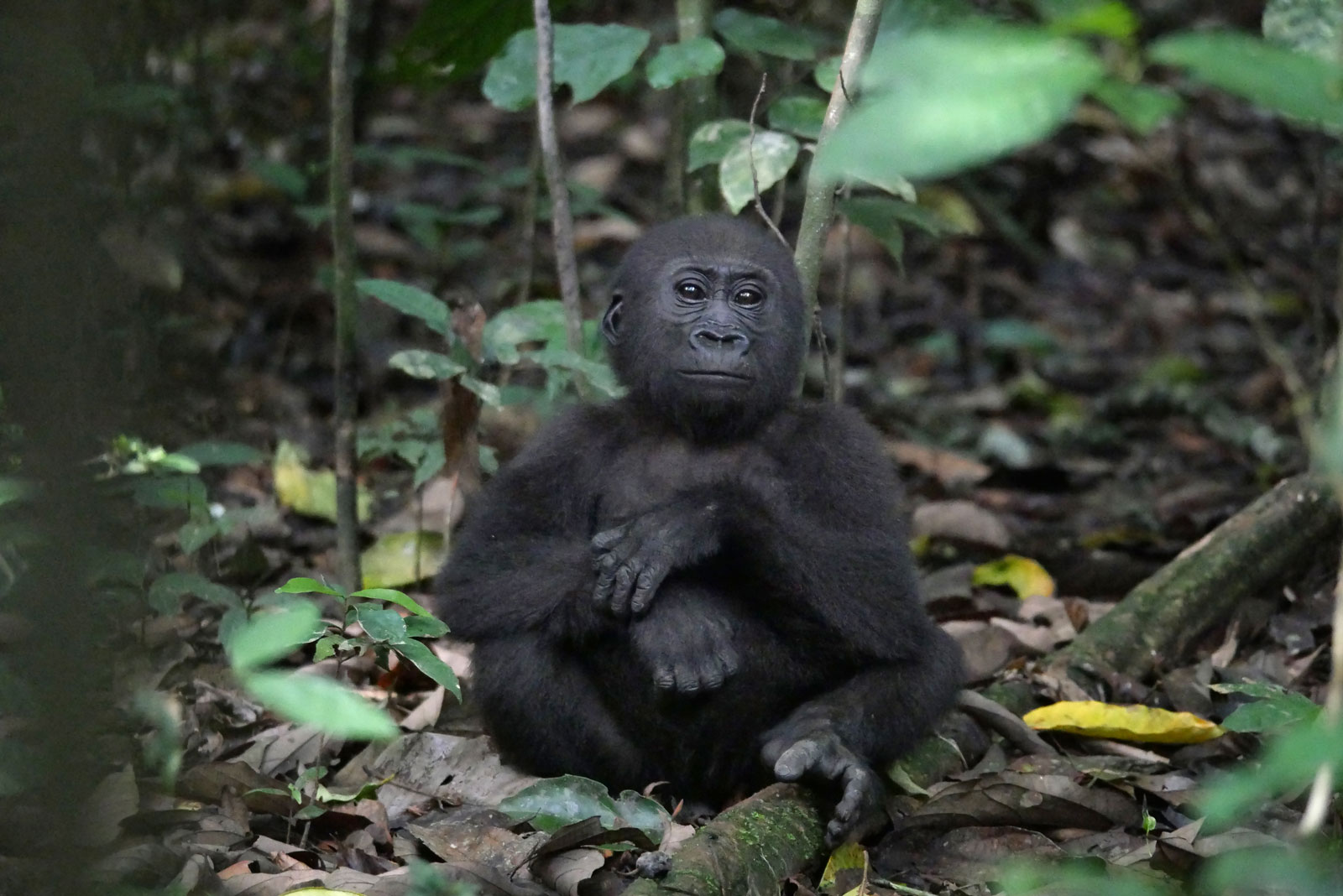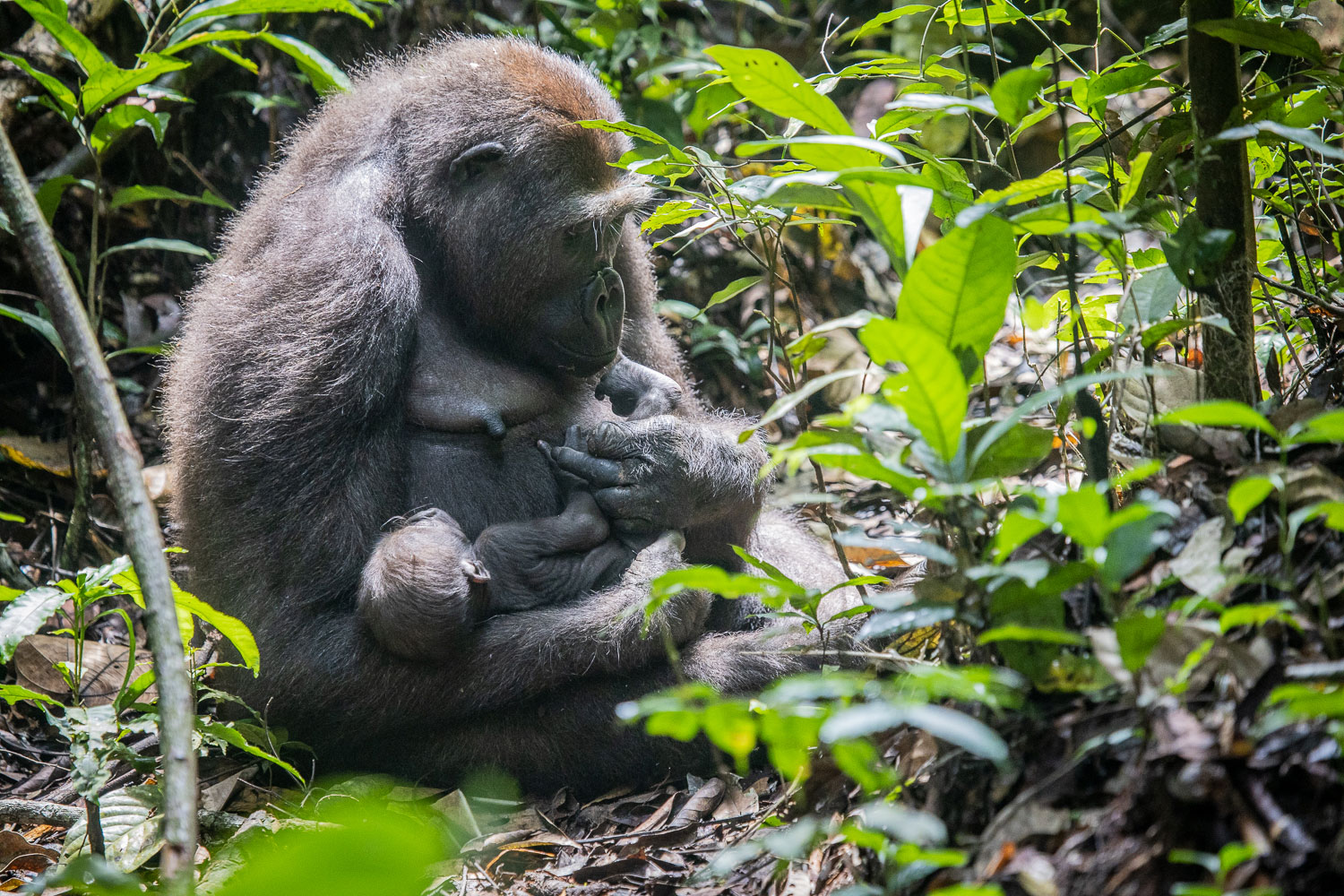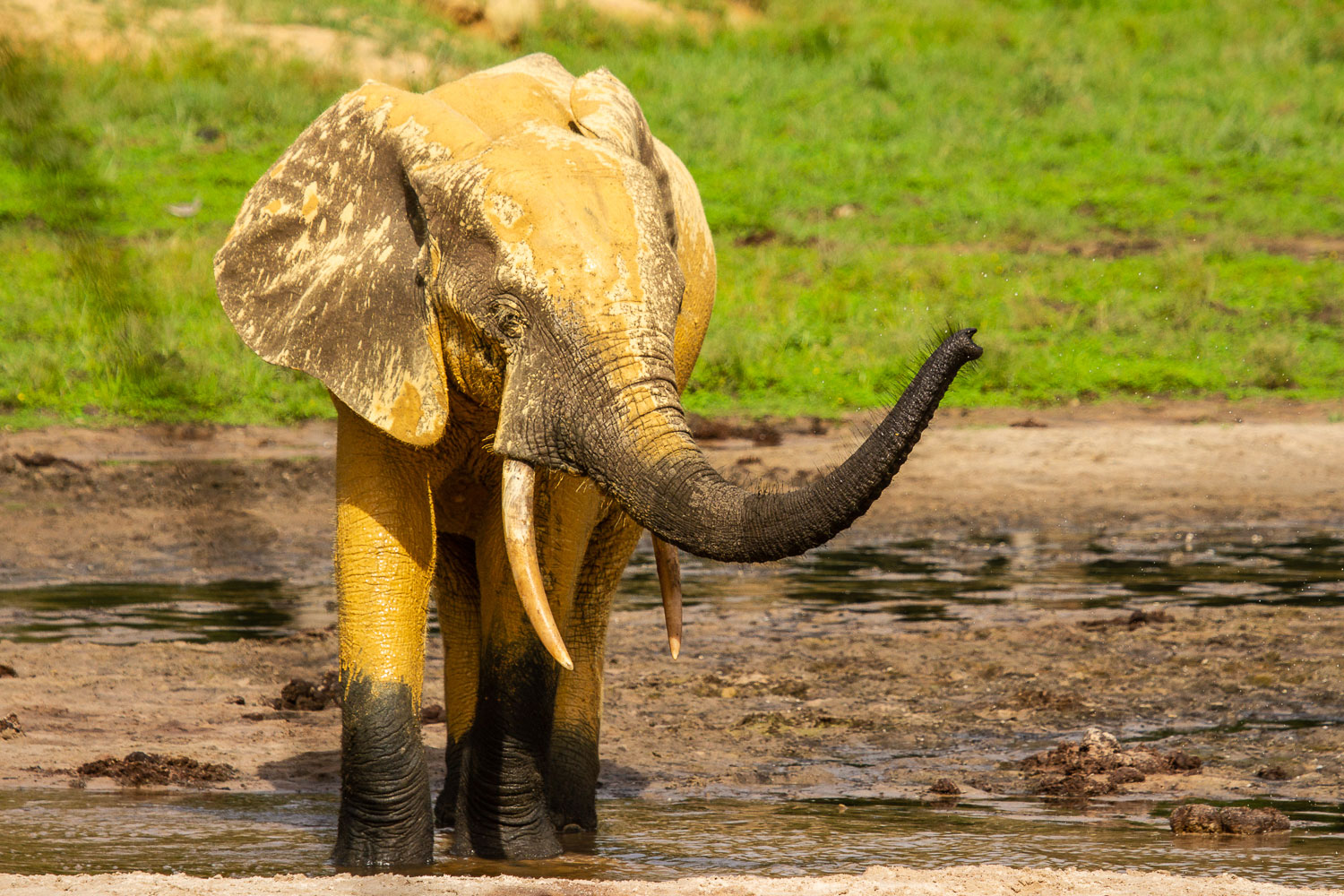
Scientists from all over the world come here to study the behavior of forest elephants and gorillas in an intact habitat, to investigate the population dynamics of different species, or to deepen their knowledge about the ecology of the rainforest. The results of the impressive number of studies are integrated in the decisions on park management.
For us, research also means understanding how the management of the park affects the surrounding communities and how we can engage them in decision-making. Research also helps us understand how conflicts between humans and animals arise – and how we can solve them, for example, when forest elephants destroy crops when searching for food.
Another important field of research in Dzanga-Sangha is infectious diseases and how they are transmitted. For instance, how can people better protect themselves against outbreaks? Or how can we reduce the risk of disease transmission from humans to habituated gorillas? Our project on “zoonoses” is looking for answers to these questions.
But let’s start our overview of some of the most exciting research projects in Dzanga-Sangha with our Primate Habituation Programme (PHP), which deals with the habituation of primates to the presence of humans, in order to explore their world and make them accessible to tourists.
The Primate Habituation Programme
Allard Blom (WWF) launched the Primate Habituation Programme (PHP) in 1997. Over time, it became increasingly successful, and is firmly established today within our work in Dzanga-Sangha. This program is important for two reasons: First, it contributes to the protection of the gorillas by increasing our knowledge of their way of life and providing information us that would not have been available without habituation; secondly, it attracts visitors and thus contributes to the development of a gentle and sustainable tourism that benefits the people in the region. There are currently three habituated gorilla groups in Dzanga-Sangha as well as the world’s only habituated group of agile mangabeys.
Habituated Lowland Gorillas
Those fortunate enough to experience gorillas in the wild will be enriched by an unforgettable experience. Perhaps it is the fact that we share about 98% of our genetic information with the gorillas – in any case, the encounter with our close relatives inspires strong feelings and the desire to protect these wild animals and their habitat. This is precisely one of the great strengths of the Primate Habituation Programme: It connects people with nature and creates an understanding for nature conservation.
A key to the success of the habituation process lies in the extraordinary abilities, patience and commitment of the BaAka trackers. Their heightened sense and extensive knowledge of the forest are astonishing: They can perceive the slightest noises and smells in dense forests; they recognize some signs in deep foliage that are not visible to the untrained eye; they distinguish the tracks of different animal species; they know how old marks are and in which direction they point.
A fixed share of the fee paid by visitors to observe the gorillas goes to the local communities. In this way, intact nature becomes an asset worth protecting, which contributes to better living conditions for the local people.
Long-term Studies on the Population Dynamics of Forest Elephants
Hardly any other place in Central Africa offers such good conditions for the observation of forest elephants as Dzanga-Sangha. The Dzanga Bai is the only place in the world that regularly attracts a high number of forest elephants. Almost every day of the year, between 40 and 100 animals visit the large clearing in the rainforest.
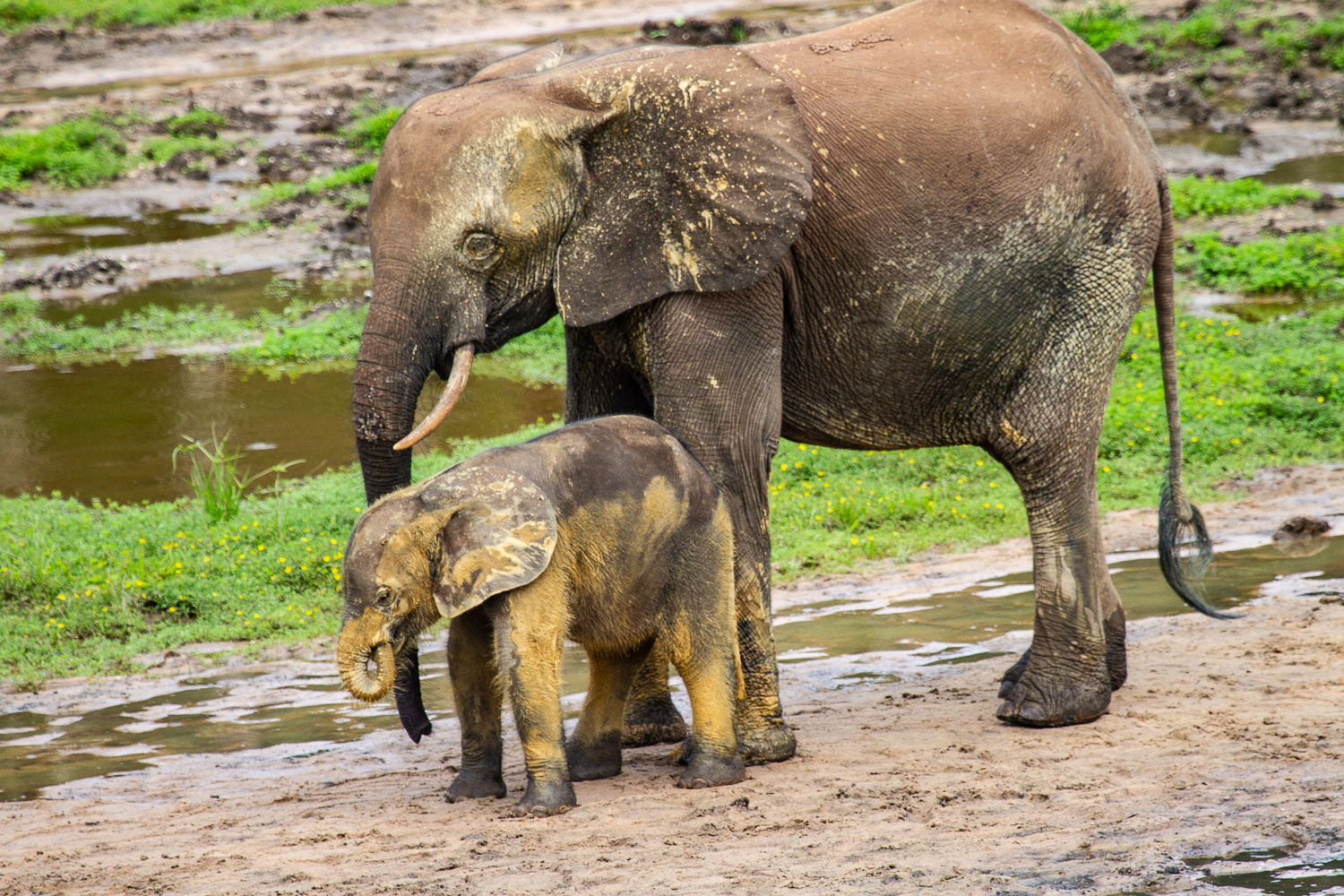
In 1990, Andrea Turkalo started the first and longest study on forest elephants at Dzanga Bai – the Dzanga Forest Elephant Study. Over a period of 27 years, data have been continuously collected, analyzed and evaluated. More than 4,000 forest elephants have been identified; over 1,000 have been observed over long periods of time, allowing researchers to follow their life histories. This resulted in a wealth of data that provides us with information about movement patterns, family relationships, age structures, social behavior, reproduction and nutrition.
To learn more about their migratory routes, selected forest elephants have been fitted with satellite collars for some time now. After all, knowledge about their movement patterns – even across national borders – is one of many important steps towards the comprehensive protection of forest elephants in the Congo Basin.
Bio-monitoring
It is important to collect data on the condition of forests and species on a regular basis in order to reveal their trends, in order to help us to manage Dzanga-Sangha. This systematic collection of data is called bio-monitoring.
In Dzanga-Sangha, we have established a monitoring system that not only follows wildlife species, but also, for example, how human pressure affects the natural resources. In addition, we record the spatial distribution of habitats, whether and how the forest area changes, and collect data on the use of timber.
Monitoring Forest Clearings with Camera Traps
Natural forest clearings (Bais) is a special focus of the monitoring program since they are known for their wealth of species. Poachers are aware of this richness and could target the bais, which therefore need special protection. Monitoring with camera traps is part of this protection.
In the DSPA, we are currently monitoring four large forest clearings with permanently installed camera traps. On the large Dzanga Bai alone and in its vicinity, a total of 30 camera traps monitor activities and provide us with a wealth of data on the animals that come here, how often they come and how they use the resources.
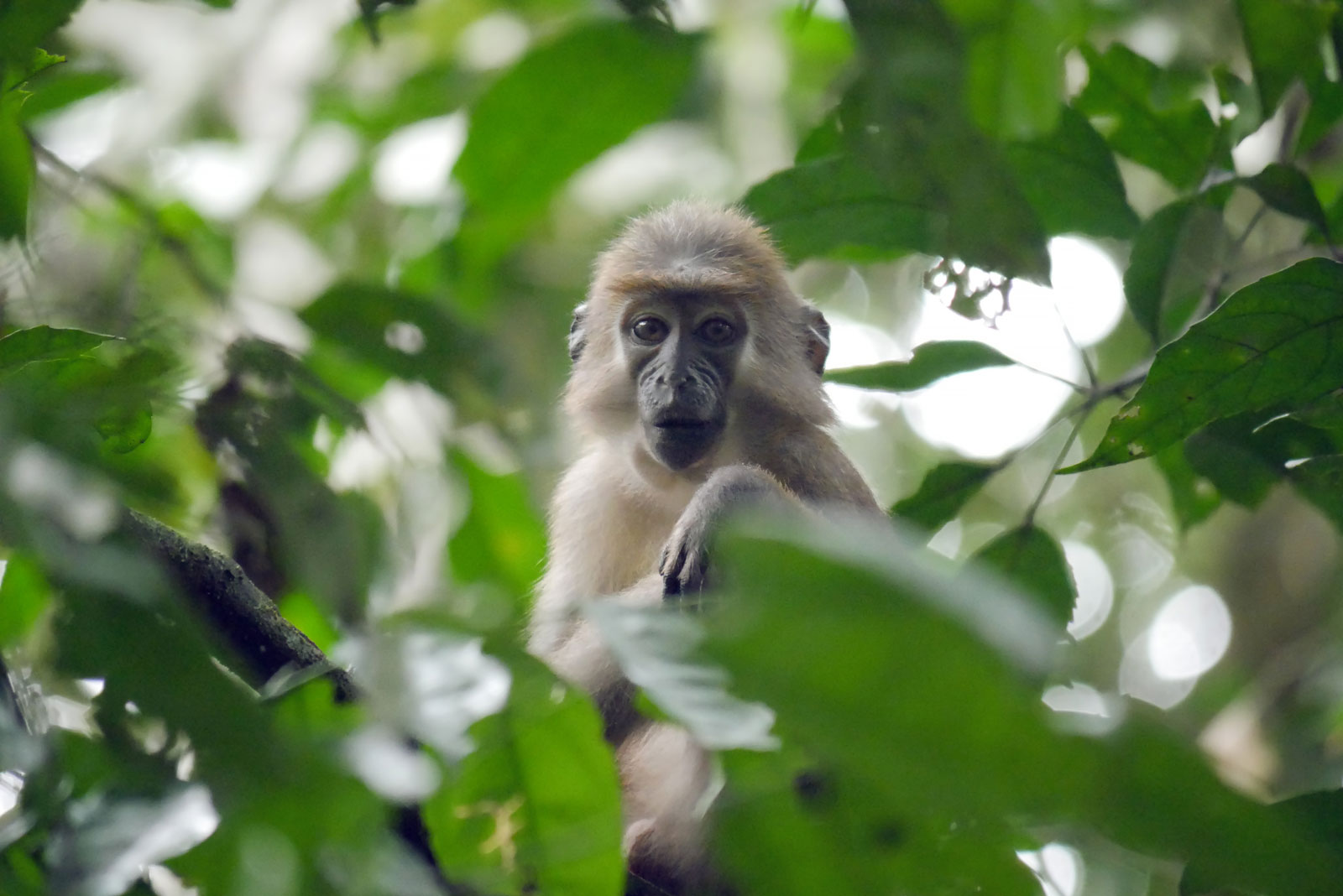
Research on Zoonoses
Zoonoses are infectious diseases that can be transmitted from humans to animals – and vice versa. Ebola and anthrax, for example, are among them. To protect humans, habituated primates, and other wild animals, we worked with the Robert Koch Institute on an early warning system for 6 years. This system is designed to help identify health threats rapidly and initiate immediate responses. Since 2022 we are cooperating with HIOH Helmholtz Institute for One Health.
This approach (also known as “One Health”) is highly appreciated by the local populations: It reduces the risk of fatal epidemics and helps to keep habituated gorilla groups and other wildlife populations healthy – thus securing the source of ecotourism income.
